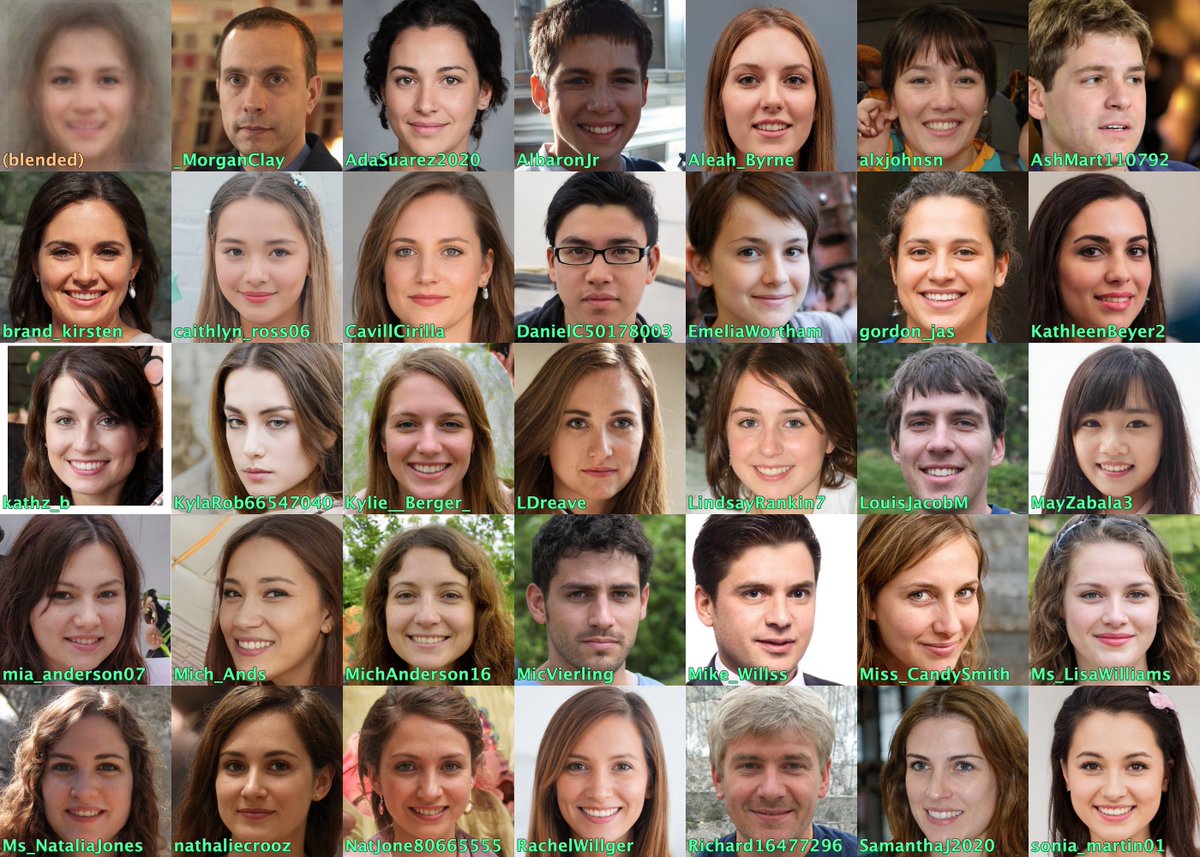How did this tweet about "digital business cards" from an account with a GAN-generated face pic wind up getting a bunch of retweets from other accounts with GAN-generated faces? #TuesdayShenaniGANs
cc: @ZellaQuixote
cc: @ZellaQuixote

Answer: all of the accounts in question are part of a network of accounts that tweet links to blogs and obscure topic-specific news sites and retweet each other. This networks consists of 34 accounts created between June 2019 and March 2021, all with GAN-generated profile pics. 



The major facial features (particularly the eyes) are always in the same location on unmodified GAN-generated face pics (at least, so far). This trait becomes obvious when one blends the images together:
This network links a variety of blogs and obscure news sites (which are themselves basically WordPress blogs). The tweets generally wind up with more retweets than likes, as the accounts in the network sometimes retweet each other without liking each other's tweets. 



The accounts in this network mostly amplify each other, with each accounts retweeting and/or being retweeted by multiple other accounts in the network. Each account likewise follows multiple other members of the network. 



Some tips on identifying GAN-generated faces here:
More info on the use of GAN-generated faces on (mostly) Twitter here:
https://twitter.com/conspirator0/status/1457051817699860483
More info on the use of GAN-generated faces on (mostly) Twitter here:
https://twitter.com/conspirator0/status/1322704400226394112
• • •
Missing some Tweet in this thread? You can try to
force a refresh































